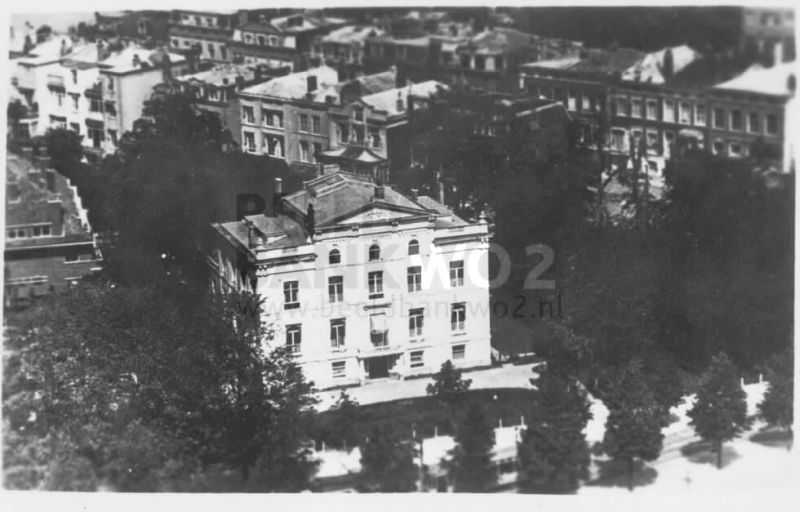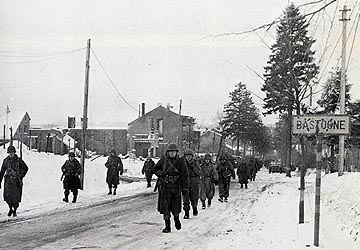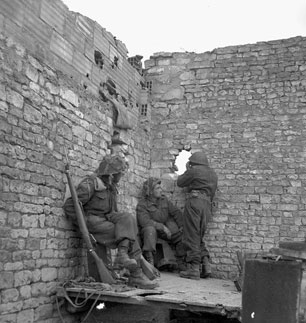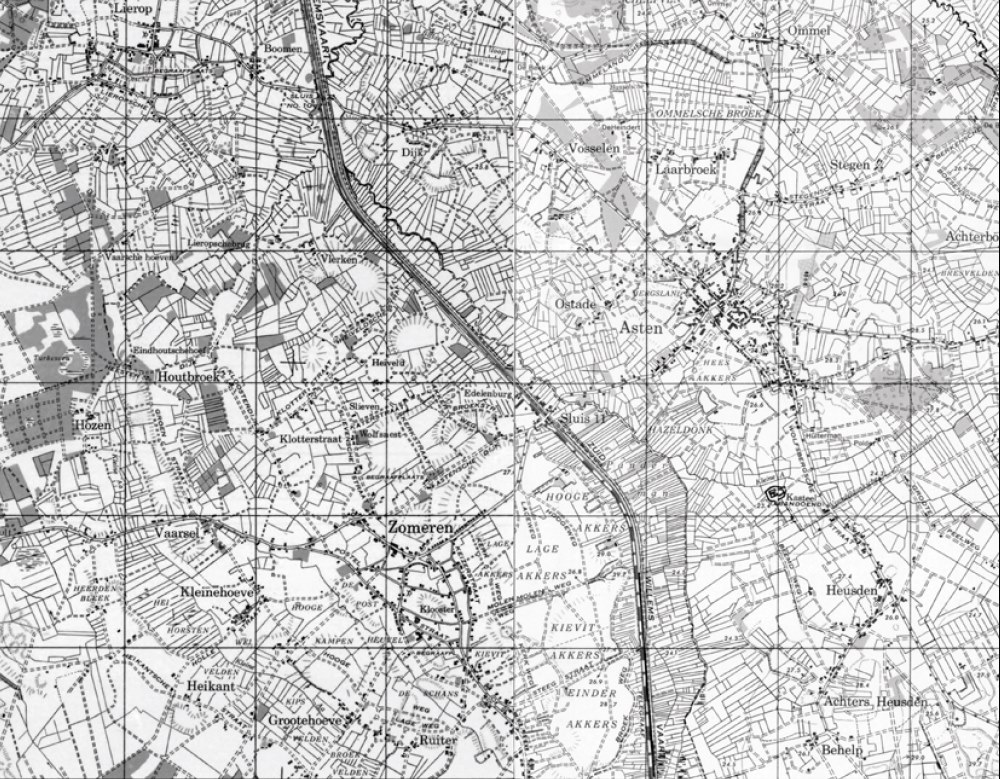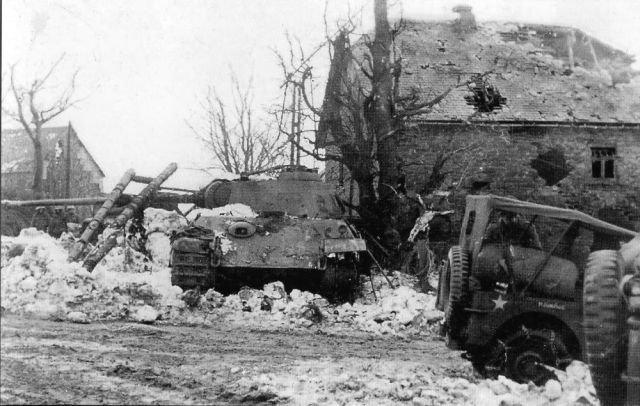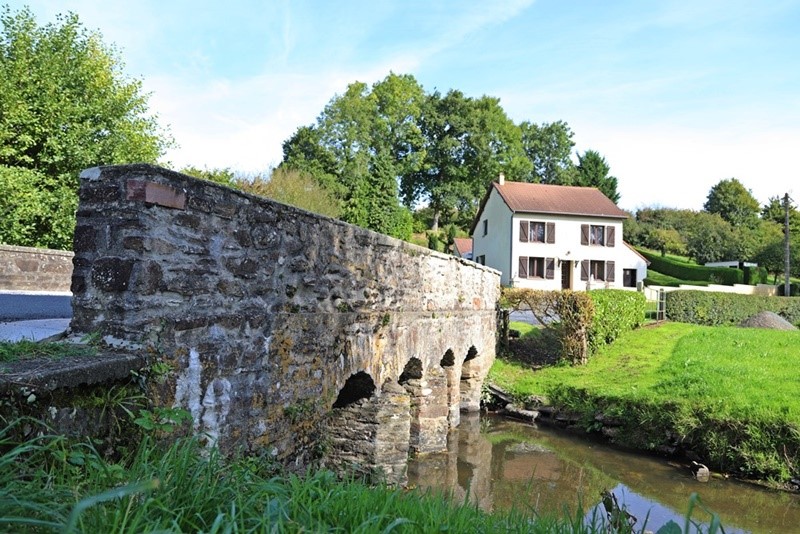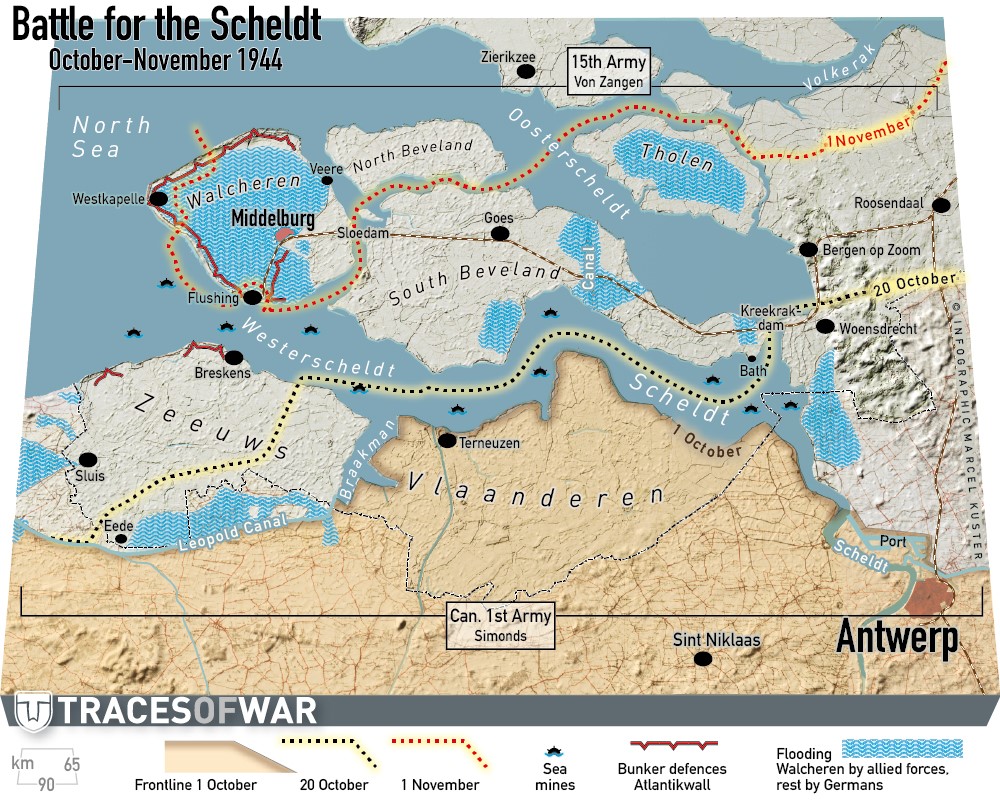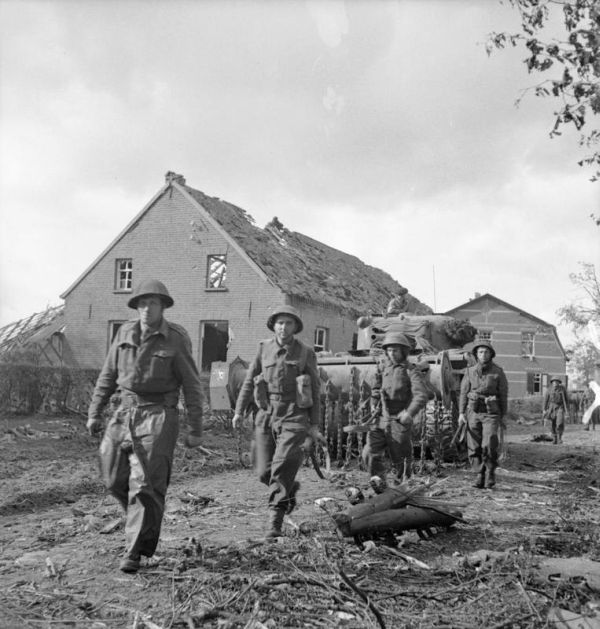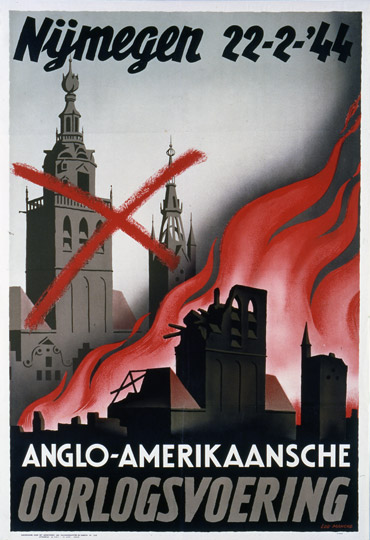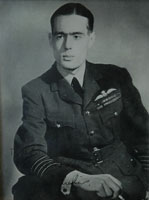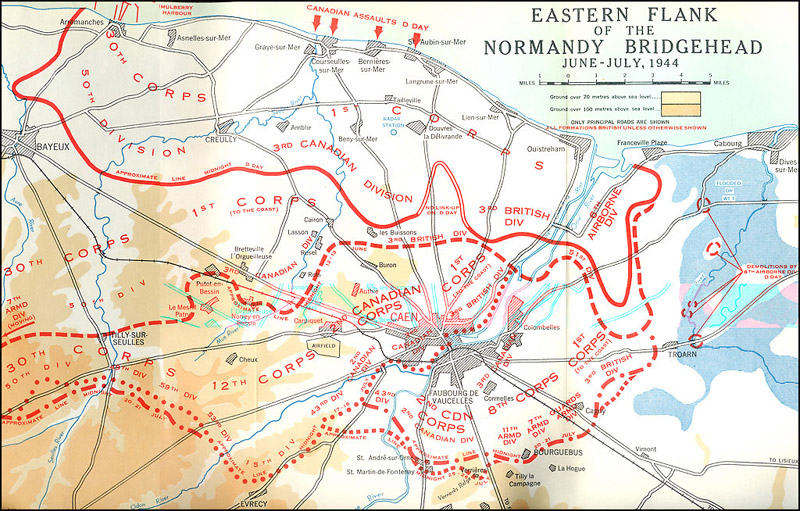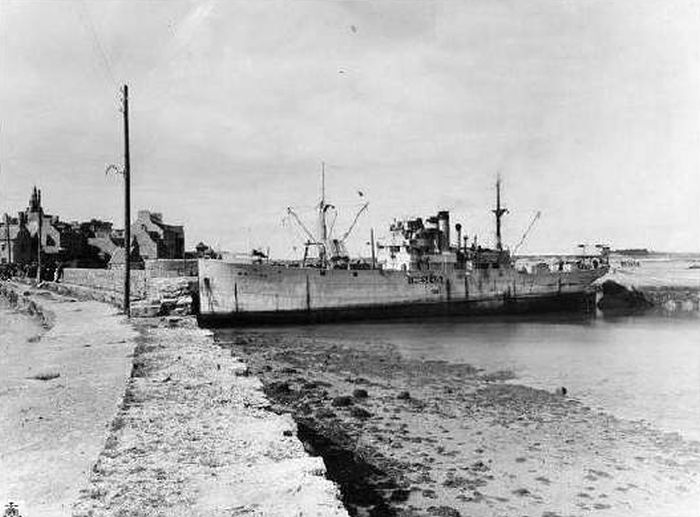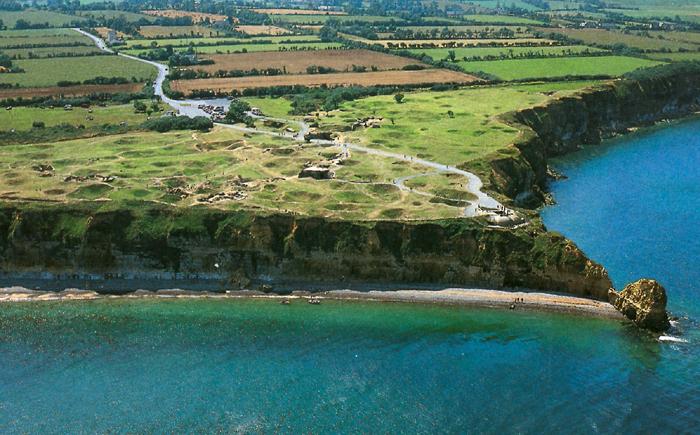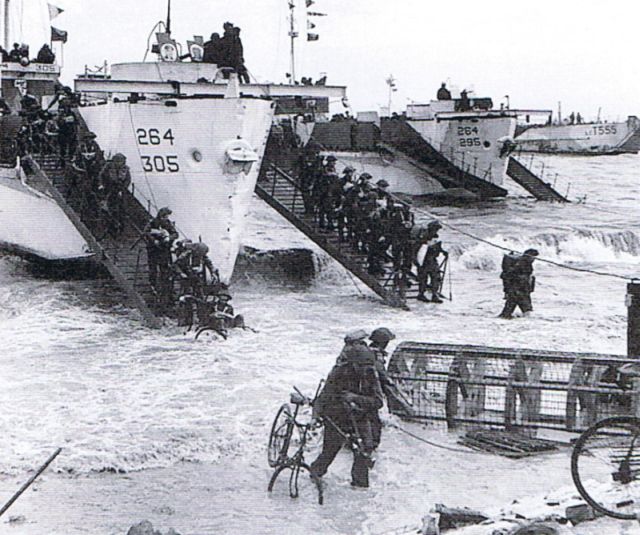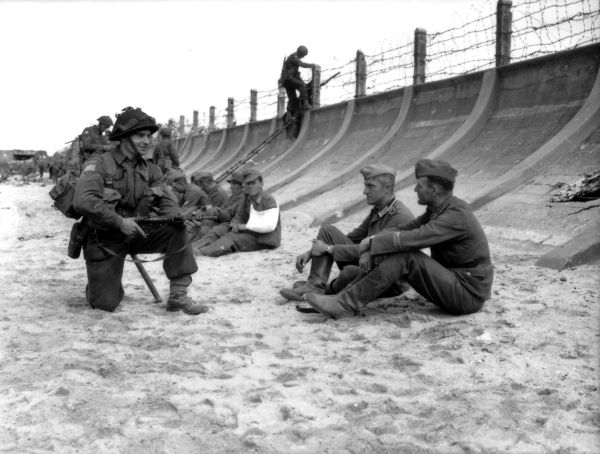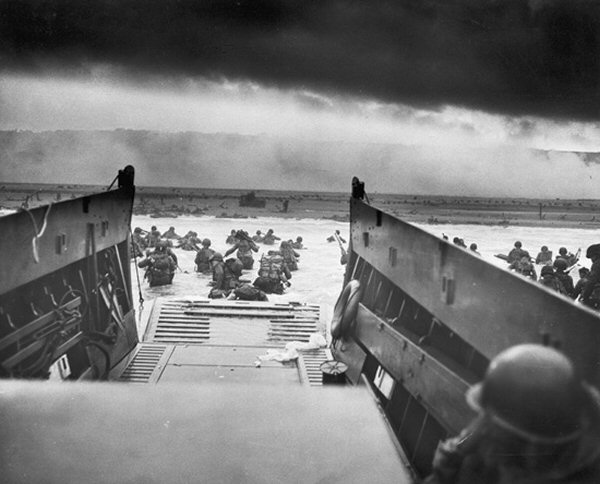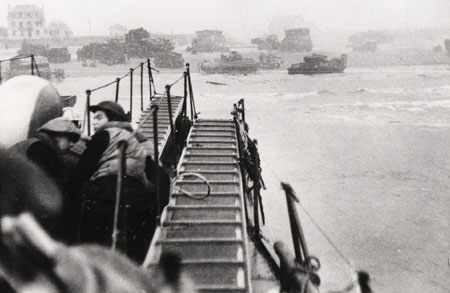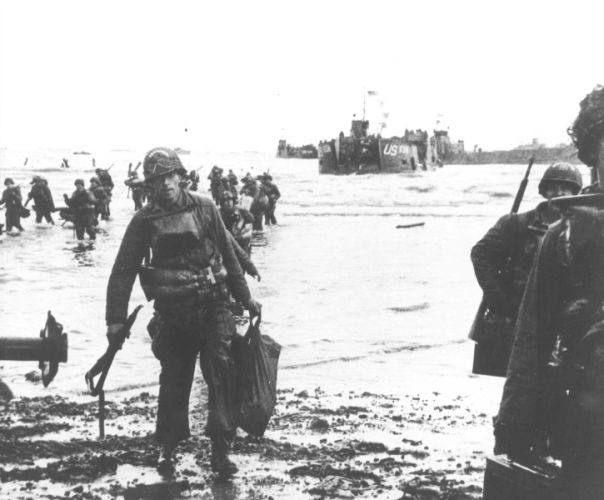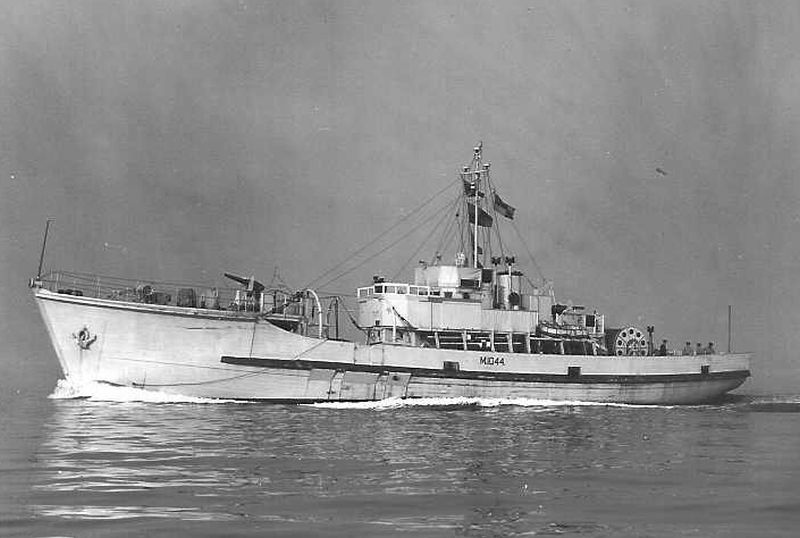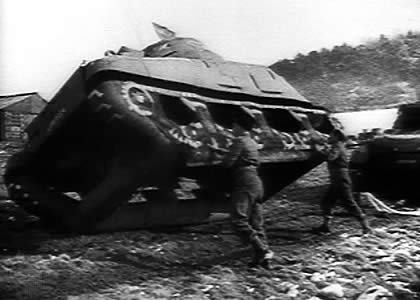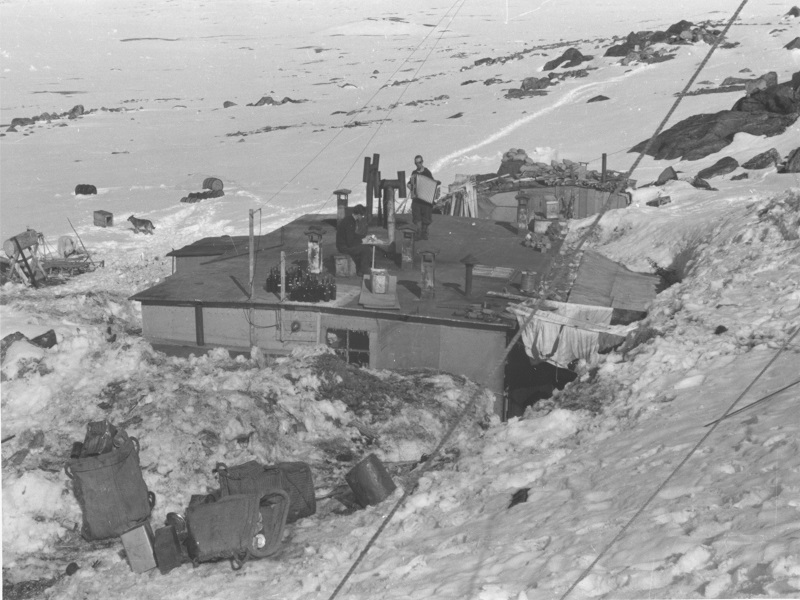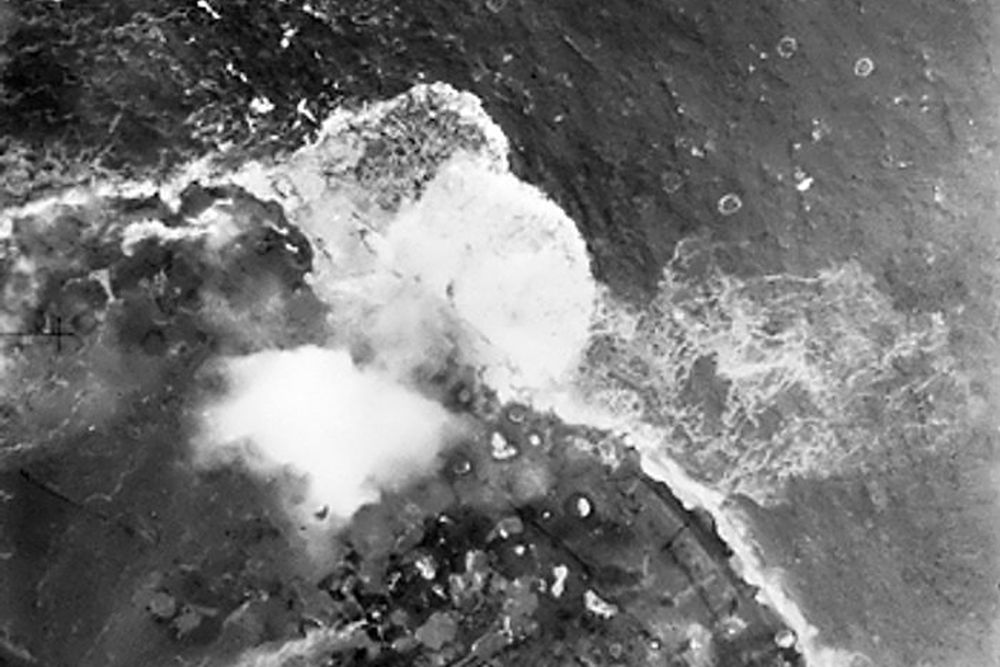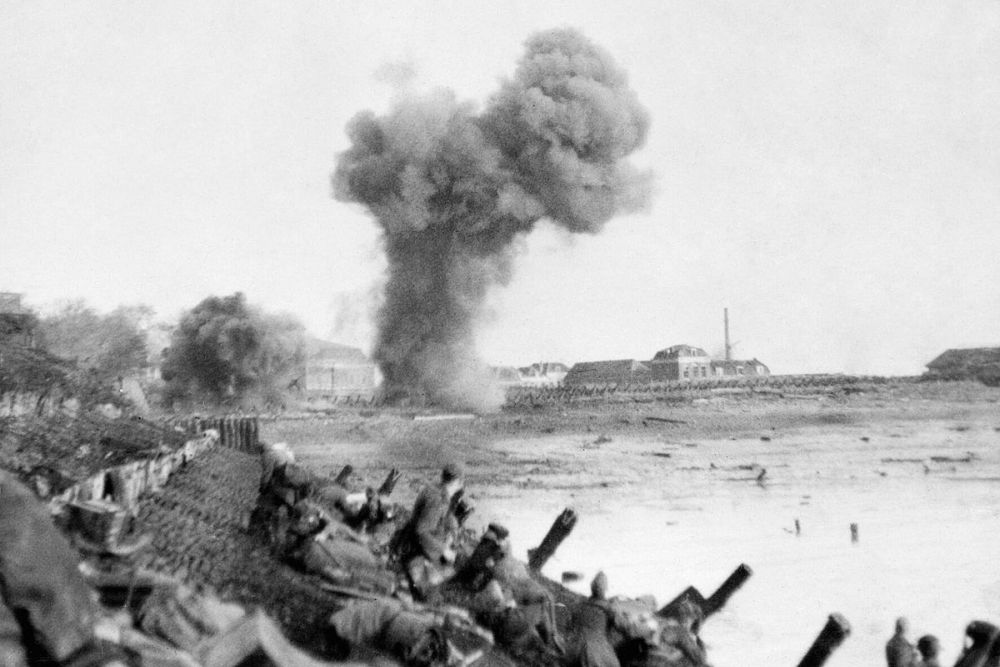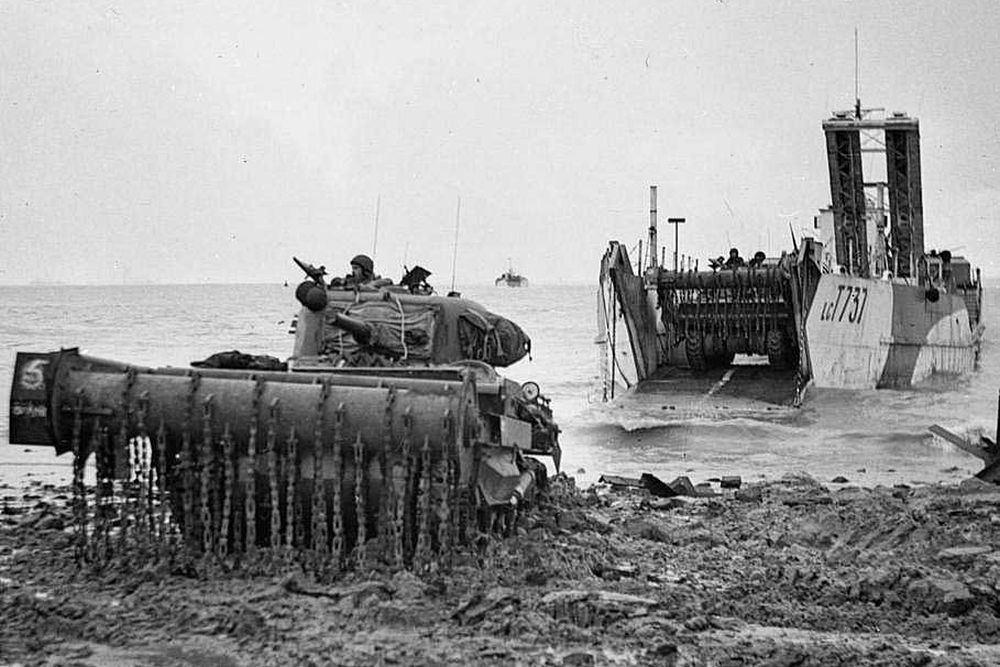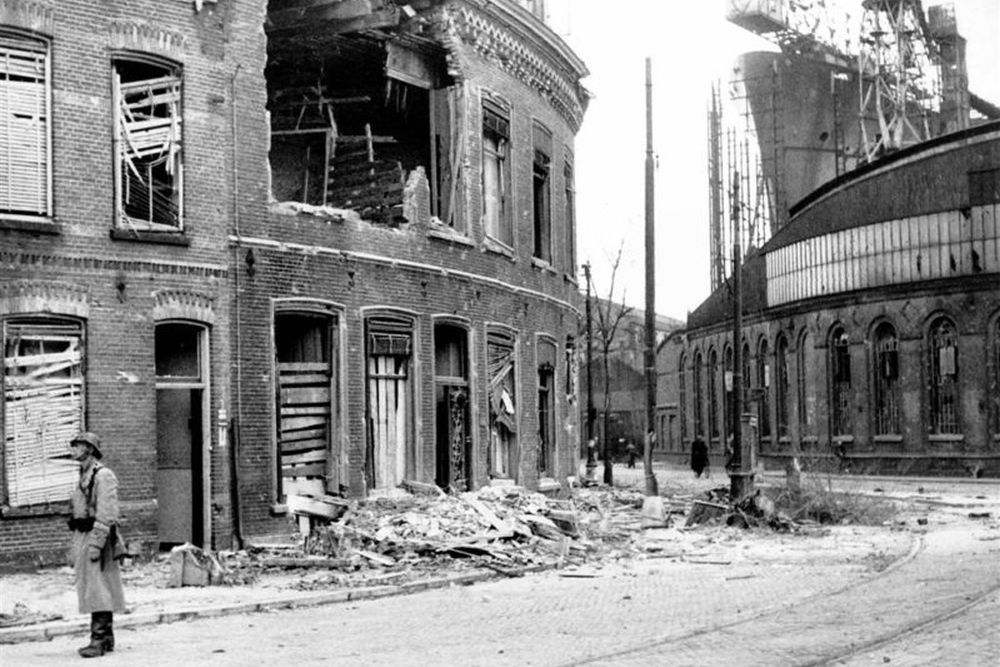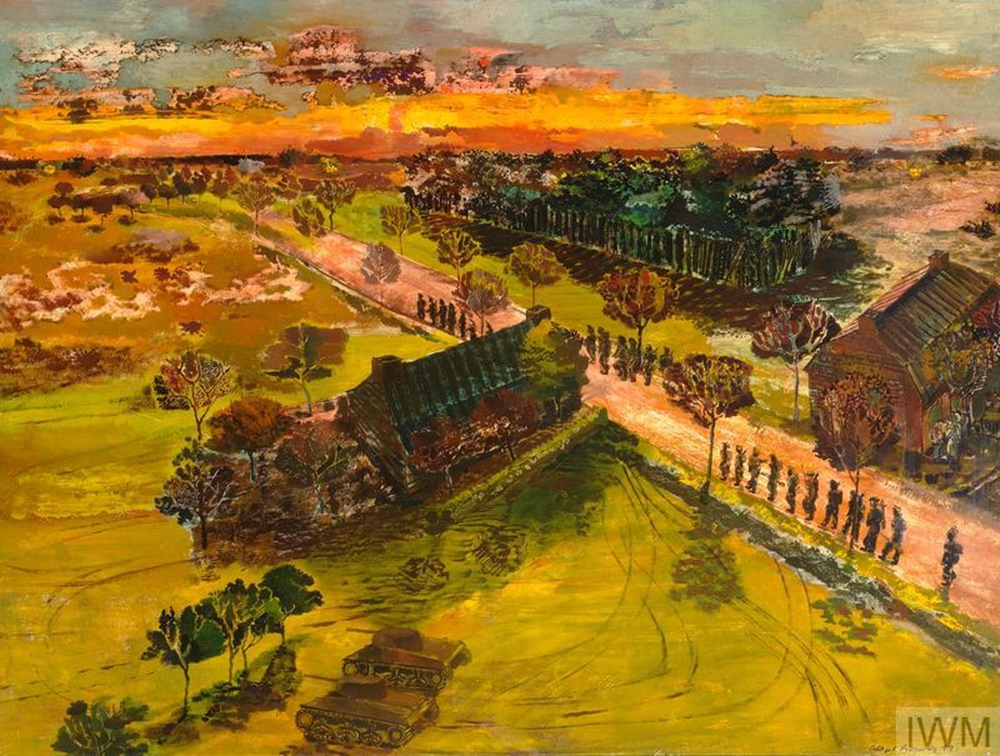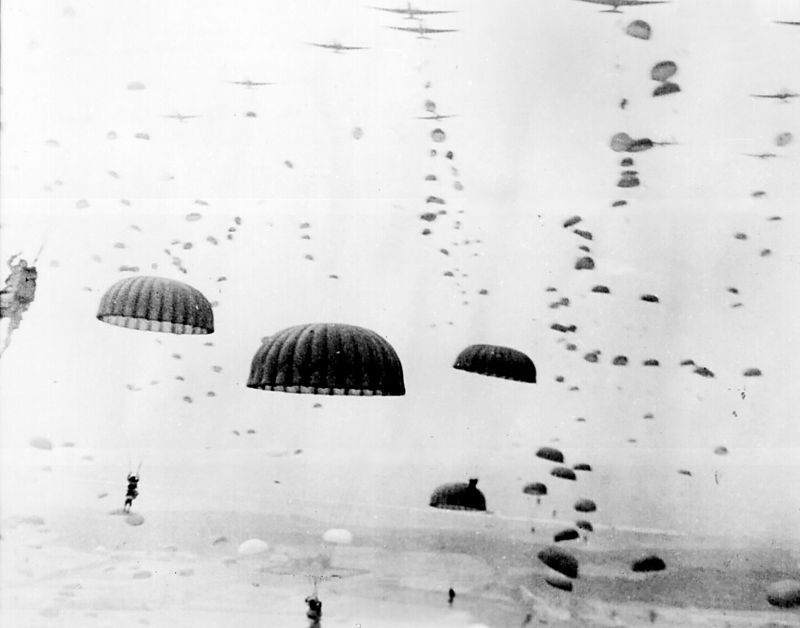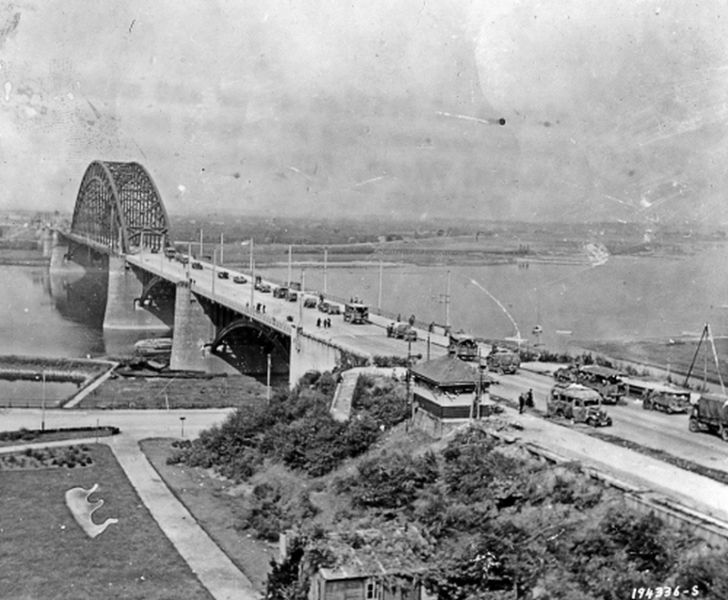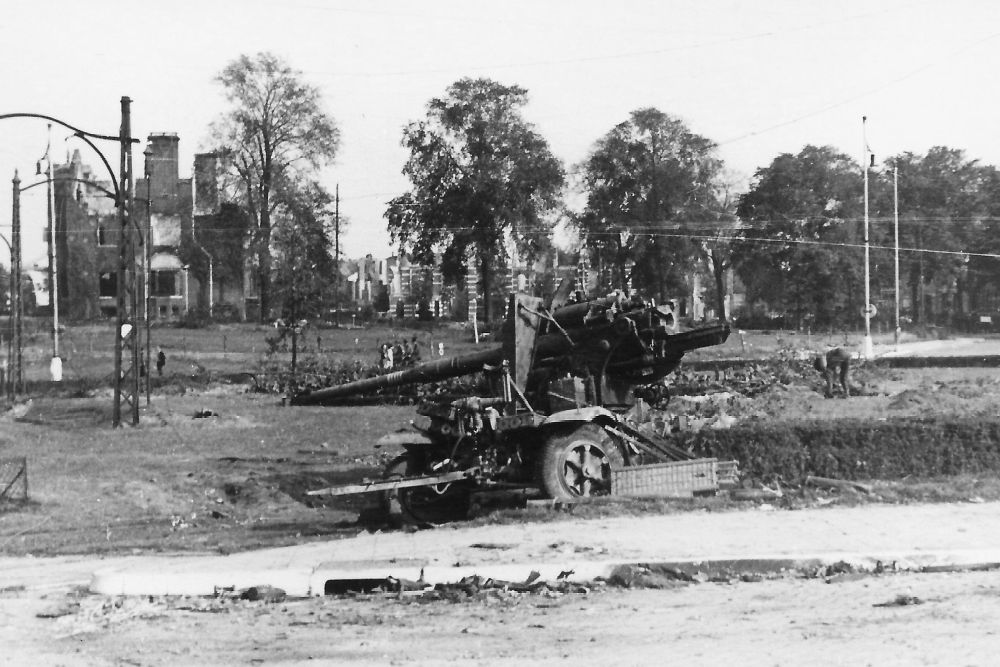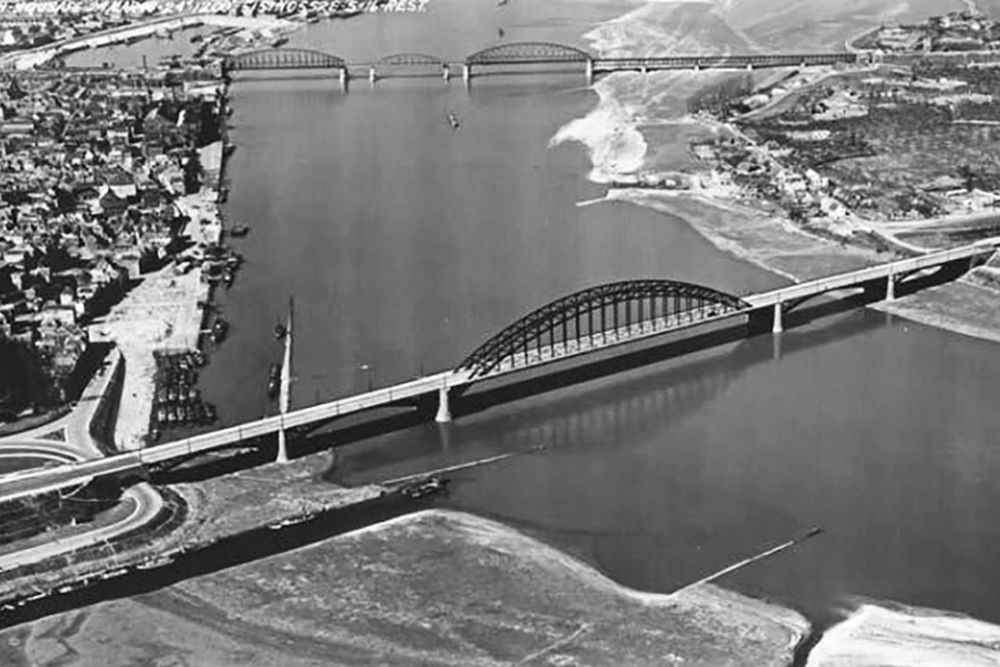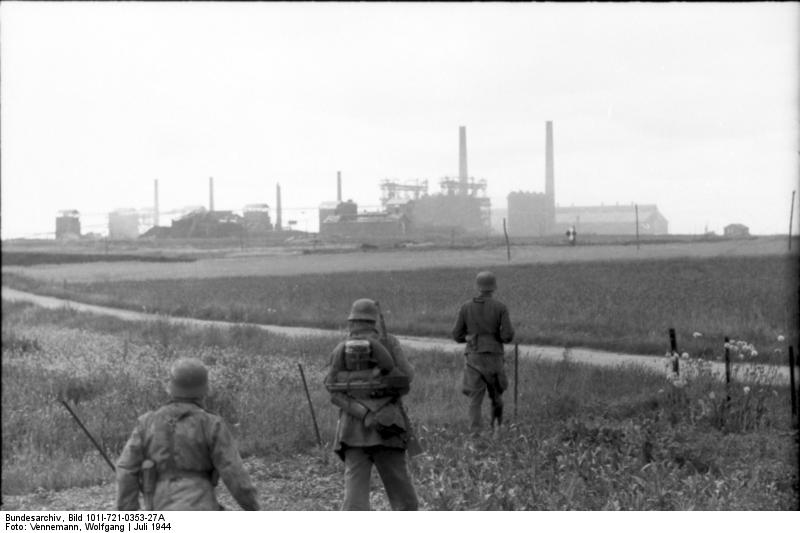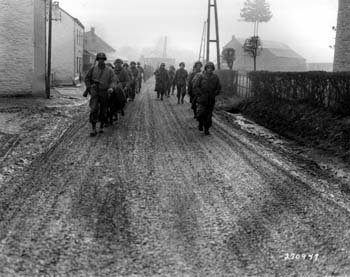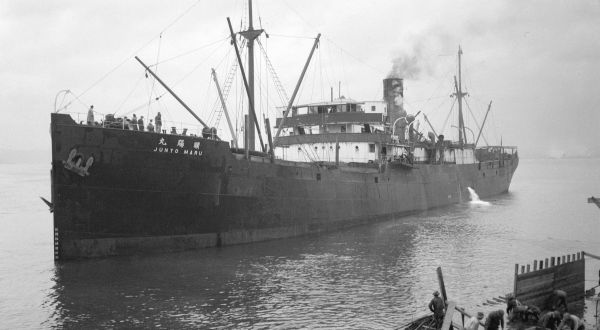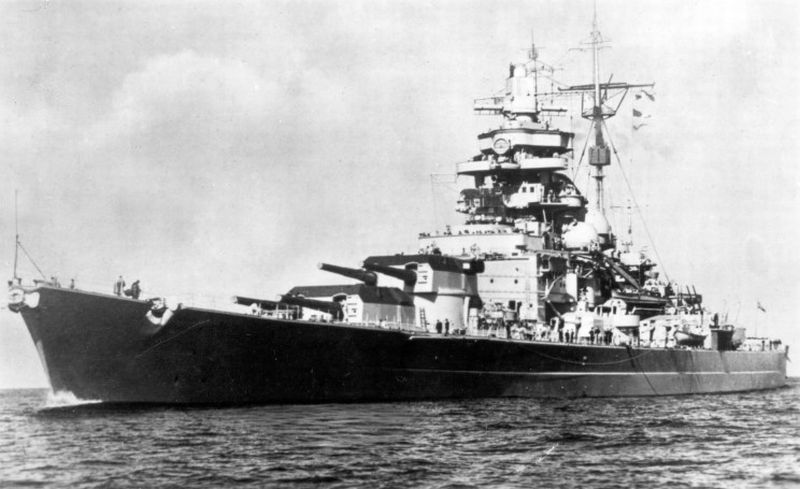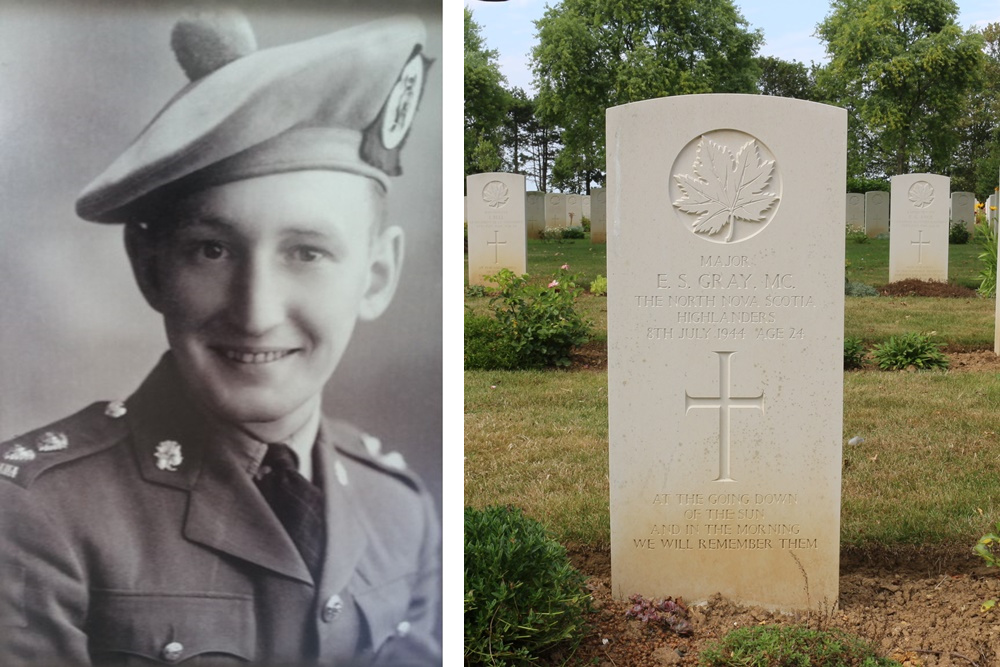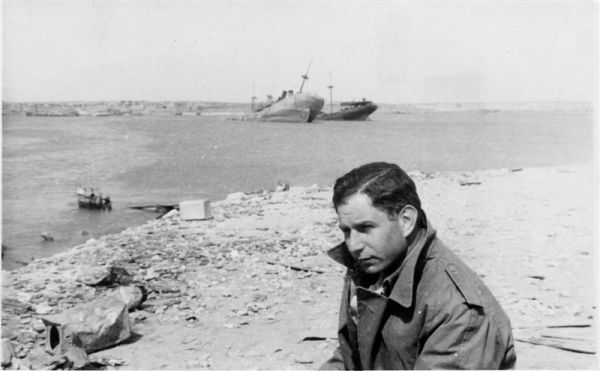Articles
- Article by Pieter Schlebaum
- Published on December 29th, 2011
Airraid on Kleykamp
The population registration administration and personal identity documents were an important checking tool for the German occupying forces. Slowly but surely a resistance movement developed itself against this system. The forging of these documents became a sophisticated issue. Another possibility was the elimination of the administration registers. One of the most well-known examples thereof is the attack on the Kleykamp in The Hague. The remarkable fact of this attack is that it was not carried out by the resistance movement itself, but by aircraft of the Royal Air Force.
- Article by Pieter Schlebaum
- Published on April 19th, 2014
Battle for Bastogne
On the 16th of December 1944 the Germans launched a last offensive against the fast moving allied forces on the Western Front. No fewer than 24 German Divisions were involved in the attack. The purpose of the German offensive was to force a breakthrough in the Ardennes which would divide the allied troops in two and then to move towards Antwerp. The allies were completely surprised by the German attack and from 16 to 20 December the German troops advanced towards Stavelot, Sankt Vith, Houffalize and Bastogne. Bastogne was a crucial hub in the Ardennes for traffic, which controlled the north - south and east - west routes. Eisenhower realized the strategic value of the Bastogne cross roads and sent the 101st Airborne Division to the town. The city had to be held at all cost. On 20 December Bastogne had been surrounded by the Germans. They employed all possible efforts to conquer the town, which led to the Battle for Bastogne. The deceleration the German progress suffered from because of the Battle for Bastogne proved to be crucial for the further development of the offensive.
- Article by Jeroen Koppes
- Published on May 30th, 2021
Battle for Le Mesnil Patry, 11 June 1944
Norrey-en-Bessin, 1944. Lieutenant George Gordon of the 2nd Canadian Armoured Brigade drove his Sherman tank at such a speed around a curve that it turned over, leaving imprints on the small building at the corner. He retreated to Norrey-en-Bessin for a German counterattack from Le Mesnil-Patry. The imprints should still be visible, although there are no pictures of them.
- Article by Jeroen Koppes
- Published on June 5th, 2019
Battle for Sluis 11
It was September 1944. Dolle Dinsdag (Mad Tuesday) had just passed and operation Market Garden was about to begin. The strategic target of operation Market Garden was a bridgehead on the Veluwe with runners across the IJssel. Airborne troops were charged with securing a number of river crossings, so that the ground units from the XXX Corps could advance. This corps would move in across ‘Hell’s Highway’ from the Belgian border at Eindhoven and Nijmegen to Arnhem. However, the Arnhem Bridge proved ‘a bridge too far’.
- Article by Sjoerd Aarts
- Published on July 8th, 2015
Battle for the Elsenborn Ridge
The Elsenborn ridge is a boomerang shaped, higher laying ground east of the Belgian village Elsenborn with view on the villages Krinkelt-Rocherath and the German border. When at 16 December 1944, the Ardennes offensive started,the forward American units were ordered to fall back on this easily defendable position. Surprised by the sudden German attack the Americans fought for four days in order to secure themselves and to contain the German advance. The Ardennes offensive officially lasted from 16 December 1944 to 25 January,1945 but this battle for the Elsenborn ridge, fought between the American 99th and 2nd Infantry Divisions and the 6. German Panzerarmee would be decided in the advantage of the allies in four days.
- Article by Jeroen Koppes
- Published on April 26th, 2018
Battle for the river Elle, June 12, 1944
"And now, on 11 June 1944, I was alone with two other men from another company with very little ammunition, cut off and not sure what to do. We crept like cats from place to place, hoping to find our lines or at least other Germans with a leader among them. Stray shots, bad luck or the will of God, I’ll never know why, but by nightfall the others were dead. I found a place on the top of a rather high hedgerow, curled up with my machinegun and waited for something to happen. In the end I was fast asleep." Obergrenadier Martin Eichenseer of the 916. Grenadier Regiment about the battle for the Elle.
- Article by Arie Netten
- Published on January 11th, 2012
Battle for the river Scheldt
The developments on the Western Front, from the moment the allied troops crossed the river Seine by the end of August 1944, made the position of Antwerp more and more important. General Dwight D. Eisenhower, the American commander of all allied troops in Western-Europe already saw in an early stage that future operations, deep into Germany, only were possible if the provisioning and supply could take place through a deep water harbor close to the frontline. In August 1944, the allies did not comply with that condition. The advance that followed from the river Seine had to comply with this demand and one of the primary targets of the allies was the liberation of Antwerp.
- Article by Peter ter Haar
- Published on February 12th, 2014
Battles for Overloon and Venray
In the autumn of 1944, in a remote area of the Netherlands known as de Peel, a vicious battle was fought to reduce a German bridgehead west of the Meuse near the German border. Preceded by Market-Garden and followed by the Ardennes offensive and because of its dismal nature, heavy losses and lack of success it has been somewhat forgotten in history. Hence "forgotten battle" or "battle in the shadow". The troops themselves called it "Second Caen", because of the ferocity and unforgiving nature of the fighting. The operation was conducted by the US 7th Armored Division and later British 3rd Infantry and 11th Armoured Divisions. On the defending side was the German Kampfgruppe Walther consisting of paratroopers from the 21. Regiment, a battalion sized unit from the 10. SS-Panzerdivision Frundsberg and a Luftwaffe 88 mm battalion. The hard core of the unit was the 107. Panzerbrigade.
- Article by Wesley Dankers
- Published on September 21st, 2012
Bombardment of Nijmegen, February 22nd, 1944
Almost every Dutch person is familiar with the German bombing of Rotterdam in May 1940. In order to force the capitulation of the Dutch army, in the afternoon of May 14th, the Germans bombed the city of Rotterdam, resulting in approximately 800 deaths. However, far fewer people will be familiar with the American aerial bombardment of Nijmegen on February 22nd,1944, although this attack resulted in the same number of casualties or maybe even more.
- Article by Pieter Schlebaum
- Published on February 6th, 2016
Bombardment of the Saumur Tunnel, 8-9 June 1944
No.617 Squadron is commonly known for its actions during the Dambusters raid (Operation Chastise), for which it was specially formed. But after this famous raid it was kept in existence for the remainder of the war as a precision-bombing unit. In this role 617 Squadron carried out various other missions. One of them was the bombardment of the Saumur Tunnel in occupied France during the night of 8-9 June 1944. The raid was prepared in great haste because the Allied commanders believed the Germans would use the tunnel to move a Panzer unit to the Normandy battlefield. The tunnel was successfully bombed and the attack is regarded as a notable contribution to the success of the Normandy invasion.
- Article by Jeroen Koppes
- Published on July 12th, 2015
Defence of Carpiquet, 7 June 1944
"Was I seeing clearly? An enemy tank was pushing through the orchards of St. Contest! It then stopped. The commander opened his hatch and observed the terrain. Was he blind? Didn't he realize he was only 200 meters from the Panzergrenadiere of the II./SS-Panzer-Grenadier-Regiment 25 and the barrels of our antitank guns were directed at him? Obviously not. He calmly lit a cigarette and looked at its smoke. "
SS-Standartenführer Kurt Meyer, commanding officer of the 25. SS-Panzergrenadier-Regiment
- Article by Peter Kimenai
- Published on July 15th, 2015
Dutch contribution to Operation Neptune
Operation Neptune was the maritime counterpart of Operation Overlord, the allied landing in Normandy that started at 6 June 1944, better known as D-Day.
- Article by Bob Erinkveld
- Published on December 13th, 2022
Landing on Pointe du Hoc
As early as 1942, the Allies had been drafting plans for a possible invasion of the continent of Europe. After lengthy consultations between high ranking military and a critical search for a suitable landing site, Normandy was selected eventually. Between Utah and Omaha, assigned to the Americans, a steep cliff rose over 100 feet above the water: Pointe du Hoc.
- Article by Pieter Schlebaum
- Published on August 17th, 2020
Landings on Gold Beach
June 6, 1944 was a very important date for the liberation of Europe. On this day, the largest amphibious landing in the history of the European continent took place, Operation Overlord, when more than 130,000 British, American, and Canadian troops set foot on French soil in Normandy.
- Article by Pieter Schlebaum
- Published on June 23rd, 2020
Landings on Juno Beach
June 6, 1944 was a very important date for the liberation of Europe. On this day, the largest amphibious landing in the history of the European continent took place, Operation Overlord, when more than 130,000 British, American, and Canadian troops set foot on French soil in Normandy.
- Article by Pieter Schlebaum
- Published on January 20th, 2020
Landings on Omaha Beach
June 6, 1944 was a very important date for the liberation of Europe. On this day, the largest amphibious landing in the history of the European continent took place, Operation Overlord, when more than 130,000 British, American, and Canadian troops set foot on French soil in Normandy. Their task was to break through Hitler’s Atlantic wall. Operation Overlord claimed the life of thousands of young men and the Third Reich never recovered. The tide definitively turned in favor of the allied forces.
- Article by Pieter Schlebaum
- Published on May 3rd, 2020
Landings on Sword Beach
June 6, 1944 was a very important date for the liberation of Europe. On this day, the largest amphibious landing in the history of the European continent took place, Operation Overlord, when more than 130,000 British, American, and Canadian troops set foot on French soil in Normandy. Their task was to break through Hitler’s Atlantic wall. Operation Overlord claimed the life of thousands of young men and the Third Reich never recovered. The tide definitively turned in favor of the allied forces.
- Article by Pieter Schlebaum
- Published on February 10th, 2020
Landings on Utah Beach
June 6, 1944 marked a very important date for the liberation of Europe. On this day, the largest amphibious landing in the history of the European continent took place, Operation Overlord, when more than 130,000 British, American, and Canadian troops set foot on French soil in Normandy. Their task was to break through Hitler’s Atlantic wall. Operation Overlord claimed the life of thousands of young men and the Third Reich never recovered. The tide definitively turned in favor of the allied forces.
- Article by Peter Kimenai
- Published on February 20th, 2015
Mine sweeping activities on the Scheldt, 1944
For the Royal Dutch Navy, the most direct and visible contribution to the liberation of The Netherlands was the participation in mine sweeping actions on the Scheldt in the second half of 1944.
- Article by Frank van der Drift
- Published on February 22nd, 2015
Operation Bodyguard, deception for Overlord
During the Teheran Conference in November 1943 the "Big Three", Roosevelt, Churchill and Stalin, approved of a plan of deception.Germany was to be deceived as to the place, time and means for the future landing in Normandy, codenamed Overlord.
- Article by Mia van den Berg
- Published on December 19th, 2016
Operation Haudegen
Operation Haudegen was the code name of a secret mission of the meteological department of the Kriegsmarine on the island of Spitsbergen, carried out by a small complement of 11 men.
- Article by Wilco Vermeer
- Published on June 22nd, 2023
Operation Infatuate: Inundation of Walcheren, October 1944
In October 1944, the dykes on Walcheren were breached in four places by aerial bombings in support of Operation Infatuate, the liberation of Walcheren. The intention was to impede the German defense and to render a considerable part of the German defenses on the island inoperable.
- Article by Wilco Vermeer
- Published on June 19th, 2023
Operation Infatuate: Landing near Flushing, Infatuate I
Operation Infatuate I was the designation for the amphibious landings near Flushing on November 1, 1944. That day, No. 4 Commando and the 115th Infantry Brigade beached near Flushing to make their contribution to this operation.
- Article by Wilco Vermeer
- Published on July 7th, 2023
Operation Infatuate: Landing near Westkapelle Infatuate II
Operation Infatuate was the final stage of the battle of the Scheldt. In addition to a land operation via Zuid-Beveland and the Sloedam, in Operation Infatuate I and II amphibious landings were undertaken near Flushing and Westkapelle respectively.
- Article by Wilco Vermeer
- Published on July 16th, 2023
Operation Infatuate: Liberation of Flushing
After No. 4 Commando had landed in the early morning of November 1, 1944 on Uncle Beach near the Oranjemolen in Flushing, a fierce battle of the port ensued against the local German troops. Once the 155th Infantry Brigade of the 52nd (Lowland) Infantry Division had taken over the advance, Flushing was liberated after Hotel Brittania had been captured.
- Article by Jeroen Koppes
- Published on March 1st, 2023
Operation Kent: British defense of Helmond
In mid-October 1944, Helmond was transformed from occupied territory to a rest and recuperation area for allied troops. Allied headquarters were established in extravagant mansions on the west bank of the canal, and in other places, such as in the mission Christus Koning in the Brouwhuis district. An atmosphere of calm reigned. At the same time, peace was being celebrated and the whole town buzzed with parties, although some were only open to the local ladies.
- Article by Wilco Vermeer
- Published on September 5th, 2022
Operation Market Garden
According to history, Operation Market Garden should have been the operation that was to put an end to World War Two in Europe before the end of 1944. Up until today, this operation still triggers discussions about the goals, the set up and the result. This often appears to make whatever was decided and has happened at the time disappear into the background. It appears that in particular questions of guilt and what in fact should have been done have gained the upper hand in history.
- Article by Wilco Vermeer
- Published on February 11th, 2017
Operation Market Garden: First attack on the Waal Bridge, 17 September 1944
The capture of the various bridges across the rivers and canals in Mid-Holland was one of the most important assignments given to the three airborne divisions who were deployed during Market garden. Regarding the 82nd Airborne Division around Nijmegen, the railroad bridge across the Meuse at Grave, the bridges across the Meuse-Waal canal at Mook-Molenhoek/Katwijk and the railroad-traffic bridge across the Waal at Nijmegen.
- Article by Wilco Vermeer
- Published on February 7th, 2023
Operation Market Garden: Second attack on the Waal bridge, 18 September 1944
In the early morning of September 18 1944, the second day of Operation Market Garden, G Company of the US 508th PIR made a second attempt to take control of the Waalbrug, the road bridge at Nijmegen along an eastern approach route.
- Article by Wilco Vermeer
- Published on April 3rd, 2023
Operation Market Garden: Third attack on the Waal bridges, 19 September 1944
During Operation Market Garden the American 82nd Airborne Division landed near Nijmegen with the objective to capture a few bridges in and around Nijmegen. When on September 19, British troops of XXX Corps finally flooded into Nijmegen, it was decided almost immediately to launch a joint attack on both bridges.
- Article by David Izelaar
- Published on October 17th, 2012
Operation Pegasus 1
After the dramatic end of Operation Market Garden, about 300 allied soldiers in the German-occupied territory, north of the Rhine, managed to obviate war captivity by the Germans. These paratroopers (para's) were taken under the wing of the local resistance as much as possible. For various reasons these paratroopers had to cross the river Rhine as soon as possible. In collaboration with the local resistance, the Allies prepared for a mass escape.
- Article by David Izelaar
- Published on October 17th, 2012
Operation Pegasus 2
During World War II, Major Airey Neave was head of British Intelligence. He was responsible for providing opportunities for Allied soldiers to escape from occupied territory in Western Europe and therefore he was partly responsible for operations Pegasus 1 and 2. According to Neave, Operation Pegasus 1 was the largest escape from occupied territory during World War II.
- Article by Jeroen Koppes
- Published on April 18th, 2015
Operation Stack
I went over to C Company and found a satisfied commander. He had secured the row of houses north of the steel factory until the village of Colombelles. He was only concerned about the fire from the direction of the village itself. He thought the 1st Gordons were shooting at him. We didn't know at the time that the 1st Gordons hadn't gained their objectives- Lieutenant-Colonel Charles Thomson, commander of the 5th Black Watch, commenting on the first hours of operation Stack.
- Article by Pieter Schlebaum
- Published on November 30th, 2014
Preamble to the battle for Bastogne
The battle for Bastogne was a decisive moment during the Ardennes offensive. The harsh wintery conditions and the fact that the paratroopers of the 101st Airborne Division were poorly rested and completely surrounded, made the successful defending of the city into a heroic happening.
- Article by René ten Dam
- Published on March 17th, 2013
Sinking of the Junyo Maru
Many people think the sinking of the Titanic was the biggest disaster in modern history also due to the romanticized motion pictures. Over 1,500 people drowned in the icy waters of the Northern Atlantic in the night of April 14th to 15th 1912.
- Article by Peter Kimenai
- Published on July 5th, 2019
Sinking of the Tirpitz
On September 15, 1944, Tirpitz' forecastle was struck by two Tallboys and from then on she was no longer seaworthy. The vessel was transferred to the small island of Håkøy near Tromsø in order to serve as a floating artillery emplacement. The ship now was well within reach of AVRO Lancaster bombers flying from Scotland
- Article by Jeroen Koppes
- Published on March 28th, 2021
Thirty-two days in Normandy
Major Errol Stewart Gray was born April 6, 1920 in Springhill, Nova Scotia in Canada. He stood 5 feet 6, had brown hair and brown-grey eyes.[note]Statement of Service, E.S. Gray.[/note] The family consisted of father John James Gray and mother Anna Gertrude Gray. In addition to Errol, they had three other sons: John, Edward and Jim. [note] Memorial plaque, E.S. Gray.[/note] He joined the Canadian Field Force in the rank of 2nd Lieutenant. Meanwhile, he had moved to Amherst, his parents lived in Bedford. Gray worked as a technical clerk before he entered service. Since May 22, 1940, he served in the 2nd Battalion, North Nova Scotia Highlanders and so reported voluntary for service overseas. [note]Officer's Declaration Paper, E.S. Gray, June 5, 1941.[/note]
- Article by Pieter Schlebaum
- Published on December 22nd, 2013
Transportation Plan
The German supremacy in Northwestern Europe was one of Dwight Eisenhower's main concerns in the run-up to D-Day, seeing as the Germans had over 60 divisions in that area. If only a minority of those troops would be sent off quickly to reinforce the front after the Allied landing, the Allies would have a serious problem. It would have taken them months to get an equal-sized force on the ground. To prevent this problem, two plans were designed: 'Bodyguard', which aimed to misdirect the Germans, and the 'Transportation Plan'. The latter was designed to isolate the Norman battlefield by bombing the German transport lines, thus keeping the Germans from reinforcing the front. This way, the German upper hand would be a lot smaller, and would give the Allies time to build up a considerable force in the bridgehead. The plan, however, sparked heavy debate at the Allied High Command.
